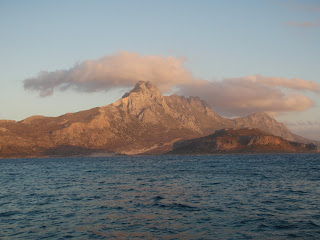We’ve now completed our eighth season and are back in Canada Black Sea . This was the result of a confusing rollout of new visa rules by the Turkish government. That cruise is still on the table, but possibly a few years out. There remains many landfalls on the south Med shore that we haven’t seen (Egypt , Jordan , Israel ), plus our summer next year will be split owing to the mid summer marriage of our second son back in Canada
Because of Turkey
 |
| Just try and connect the dots |
All told we covered about 2500 nautical miles circumnavigating the Aegean Sea and ended back in southern Turkey
 |
| Alanya Marina, Turkey - winter berth |
The last leg of our summer took us along Crete’s north shore from west to east and then we island hopped up to Turkey , where we followed the coast to Turkey Cappadocia before flying home. Arriving at Alanya we quickly settled into the cruisers social scene and busied ourselves with boat jobs in the cooler parts of the day, such that the time quickly evaporated (no pun) and we never met that goal.
.
Crete: We saw very few sailors along the coast of Crete . The entire journey from coast to coast was just as rugged and beautiful as our landfall in Gramvousa and it stayed oh so windy. Folks we met often told us that few people sail these shores during the summer due to the fierce winds that are ever present. Now why wasn’t the pilot guide clearer on that little point?
 |
| Chania, Crete - part of the beautiful Venetian harbour (with Turkish influence) |
We spent several days at anchor on the Eastern shore waiting for the wind to ease and in the end we just had to go for it as time was running out on our EU visa. Expecting the worst, it was a great sail.
 |
| Chalkis, Greece - a delightful fishing harbour |
SE Greek islands: The islands of Kasos and Karpathos were just as desolate and windy. With dramatic cliffs winds are fluky and often range from flat calm to force 6 in a heartbeat and then back again! We didn’t dawdle and moved on to Chalkis and then Simi, our final Greek island. This close to Turkey
 |
| Simi - our check-out port from Greece |
 |
| Simi - where we loaded up on wine and pork |
We checked back into Turkey
Alanya (our winter port):
 |
| DIY - mainsail repair |
When we first arrived at Alanya it was bustling with preparations for the impending Vasco De Gama rally. About 17 boats were readying for a winter cruise down through the Suez into the Red Sea as far south as Eritrea India Somalia
 |
| Our 4:00 o'clock job - when it got too hot to work |
 |
| The Alanya Marina stress reduction centre |
But we have the winter to sort out the next few years travels. All told it was a good summer. Yes it was very, very hot and quite breezy. No, we didn’t catch a single fish – despite making Grace spit on the lure every time (according to one book that was supposed to guarantee success). But we never endured any gut wrenching passages and nothing broke. It was just as cruising is supposed to be – some good sails, warm clear water for swimming, scenic anchorages and sundowners served by 4:00.
Two weeks home and already we are looking forward to getting back.
Best wishes…….Mike and Grace































